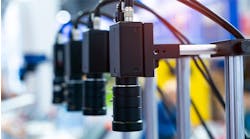Yokogawa Electric Corporation announces the release of FAST/TOOLS R10.02, the latest version of a web-based real-time operations management and visualization software package that brings revolutionary changes to real-time process information intelligence. This release is designed to significantly reduce engineering of large geographically dispersed systems, which requires both a different engineering approach and central managed deployment. The introduction of a master enterprise engineering database establishes a single engineering environment containing all common enterprise definitions and deployment data. This is easier to manage, less restrictive, and less complex than distributed databases.
Development Background
Yokogawa has identified a rising need for the integration of the various disciplines and functions required for the delivery of human-centric information solutions utilizing new technologies such as industrial cloud computing, industrial SaaS, and the Industrial Internet of Things. In essence, the aim is to connect sensors, devices, and plant facilities the remote access of data and enable supervisory control from just about anywhere. The FAST/TOOLS enterprise automation platform addresses these needs by offering comprehensive solutions for the deployment, operation, and monitoring of control system environments. This will help make faster decisions, reduce total cost of ownership (TCO), and achieve operational excellence.
Main Features
1. Enterprise engineering management
To reduce engineering time during the design phase and reduce travel time and costs for engineers and designers, Yokogawa has developed a platform-independent enterprise engineering module that allows engineers in remote locations to securely collaborate with each other and deploy applications via global IT networks. When installed on any of the servers belonging to an enterprise's automation system, this module facilitates intuitive and centralized concurrent engineering and application deployment, with engineers and other project personnel being able to access the same up-to-date project information on their displays, wherever they may be. This is easier to manage, less restrictive, and less complex than distributed databases. To enhance security, both user and server authorization is in place and the system and its applications are hardened to prevent failure and protect against unauthorized access.
2. Enhanced data sharing
As part of Yokogawa's vision to help users unlock actionable insights from big data, R10.02 includes an embedded RDBMS engine. This is ideal for use in the enterprise automation environment, where data sharing is often required over multiple servers and domains and where this is a bi-directional exchange of data with external sources and within multiple environments. The embedded RDBMS engine allows for the parallel archiving and storage of data in a local historical database as well as the central RDBMS.
3. Improved operational alarm management
As enterprise environments grow more complex and need to handle an ever-growing amount of data, alarms tend to occur with greater frequency. To reduce the number of maintenance- and commissioning-related nuisance alarms that can distract operators from responding to key operational alarms, a function has been added with R10.02 that inhibits the issuance of alarms based on limit settings. With this function, equipment maintenance can be performed without disturbing routine plant operations.
4. Role-based geo intelligence
The sharing of data globally across multiple levels and disciplines requires true role- and location-based security. With R10.02, users who sign in to the system using their OS login credentials are allowed access to data and controls based on their role and the location of their assets. Users can access their data and utilize allowed control functions from any available device.









